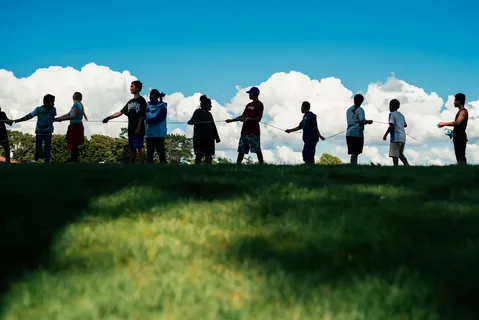3. The Impact of Youth Movements on Policy and Legislation
Youth movements have had a direct and significant impact on modern policy. Their influence can be seen in various areas, including climate change, education reform, racial justice, and gender equality. Below are several examples of how youth-led movements have shaped contemporary policies:
Advertisement
Climate Change
Arguably the most visible and influential youth movement in recent years is the global push for climate action. Greta Thunberg’s Fridays for Future movement, which began with her solo protest outside the Swedish parliament in 2018, has grown into an international network of millions of young climate activists. This movement has forced climate change to the forefront of global political discussions, with governments, organizations, and corporations being pressured to take action.
Youth movements have helped put climate change on the agenda at the United Nations and influenced the Paris Agreement, which seeks to limit global warming. Young activists have also pushed for divestment from fossil fuels and for an increased emphasis on renewable energy sources. The bold, uncompromising nature of youth-led climate activism has significantly influenced policies at both the national and international levels.
Racial Justice and Anti-Discrimination
Youth-led movements for racial justice have seen a resurgence in recent years, particularly with the rise of the Black Lives Matter (BLM) movement. The tragic killing of George Floyd in 2020 sparked protests and demonstrations around the world, many of them organized by young people. These protests demanded an end to police violence, systemic racism, and racial inequality.
In response to these movements, many governments have begun to reassess policies related to law enforcement, criminal justice, and racial discrimination. The calls for defunding the police and reallocating funds to community-based services are examples of how youth-led movements have influenced discussions on public safety and social justice.
Youth activists have also worked to challenge discriminatory practices in education, employment, and healthcare, advocating for comprehensive reforms that promote equality for marginalized communities.
Gender Equality
The #MeToo movement, which gained momentum in 2017, was largely propelled by young women who were speaking out against sexual harassment, assault, and inequality in the workplace. While the movement started in the United States, its impact has been felt globally, as young women and men alike have called for an end to systemic gender-based violence and discrimination.
The success of #MeToo has led to legislative changes in several countries, with many instituting stricter laws around workplace harassment and domestic violence. Furthermore, the movement has brought issues of sexual violence, reproductive rights, and equal pay to the center of policy discussions, forcing governments to reconsider outdated laws and practices.
4. Youth Activism in Education and Employment
Beyond activism in social justice and climate change, youth movements have also focused on issues within education and employment. Students around the world have demanded more affordable education, better working conditions for teachers, and policies that ensure equal access to quality education for all.
One example of youth-led activism in education is the #FeesMustFall movement, which began in South Africa in 2015 and spread to other parts of the world. This movement, which originated as a protest against rising university tuition fees, successfully pressured governments in several countries to reconsider policies related to student loans and higher education funding.
In the realm of employment, youth movements are advocating for better job opportunities, fair wages, and the eradication of unpaid labor. The fight for better working conditions in the gig economy, for example, has gained significant traction with younger generations, who are increasingly demanding labor protections, such as minimum wage standards, health benefits, and paid leave.
5. The Intersection of Youth Movements and Political Engagement
Youth movements are not just about activism in the streets; they are also about influencing the political process itself. Younger generations are more likely to engage in political campaigns, vote in elections, and advocate for candidates and policies that align with their values.
The 2018 midterm elections in the United States saw a significant surge in youth voter turnout, particularly among millennials and Generation Z. In fact, youth voter turnout reached its highest level in 25 years, and young people played a critical role in shaping the outcome of key races. This shift in voting behavior has made young people an important demographic for political candidates and has prompted political parties to take youth issues, such as climate change, healthcare, and education, more seriously.
Youth engagement is not limited to elections. Young people have increasingly taken on leadership roles in political organizations and advocacy groups, organizing campaigns, participating in town halls, and engaging directly with lawmakers to push for policies that reflect their concerns.
